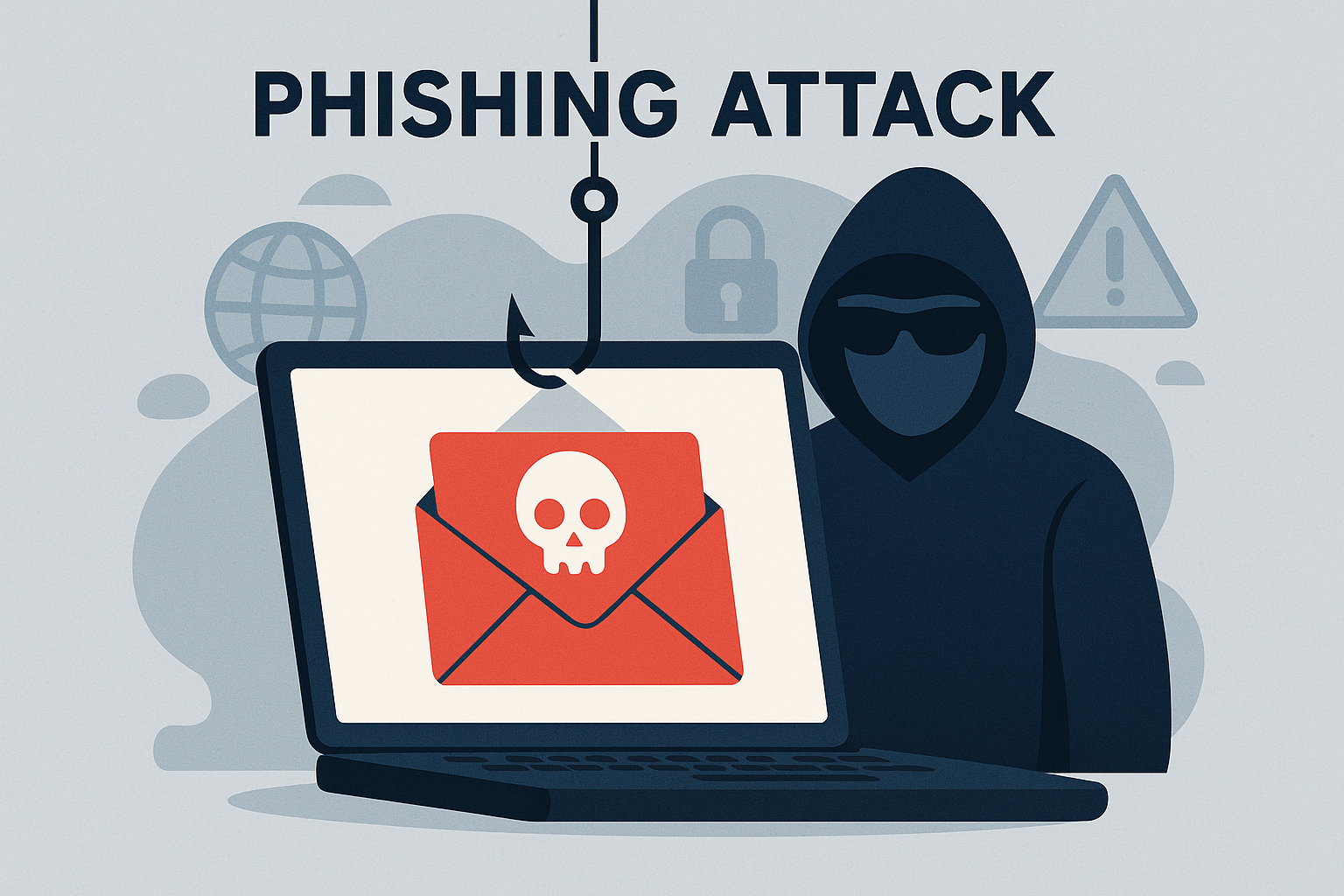
🕵️♂️ Phishing is one of the oldest tricks in the cybercrime playbook—but it’s also one of the most dangerous. Every day, millions of people unknowingly click fake links, give away sensitive data, or fall into email traps designed to steal their identities.
In 2025, phishing scams have become smarter, more convincing, and harder to detect—but with the right knowledge, you can stay one step ahead.
🐟 What Is Phishing?
Phishing is a type of cyberattack where attackers pose as legitimate entities (like banks, social media, or government agencies) to trick people into revealing personal information such as:
- Passwords
- Credit card details
- OTPs
- Social Security or Aadhaar numbers
- Login credentials
Phishing can happen via email, SMS (smishing), calls (vishing), social media DMs, or fake websites.
🚩 How to Detect a Phishing Attack
Look for these common red flags to avoid being tricked:
1. 📧 Suspicious Email Addresses
- The sender’s address may look similar to a legit company but with minor changes (e.g.,
support@paypall.cominstead ofsupport@paypal.com).
2. 🌐 Fake Links (Hover Before You Click)
- Hover over the link without clicking. If it leads to an unknown or suspicious URL, don’t click it.
3. 🛑 Urgency or Scare Tactics
- “Your account will be closed in 24 hours!”
- “Verify your identity or get locked out!”
Phishing thrives on panic.
4. ✍️ Grammatical Errors or Odd Formatting
- Official emails rarely have typos or poor formatting. If it feels “off,” it probably is.
5. 📄 Attachments You Didn’t Ask For
- PDFs, ZIP files, or Word docs in random emails may contain malware or keyloggers.
6. 👀 Too-Good-To-Be-True Offers
- Free iPhones, instant job offers, or prizes you never signed up for = scam.
🔐 How to Prevent Phishing Attacks
Take these steps to keep yourself and your data safe:
✅ 1. Use a Reputable Email Provider with Spam Filtering
- Gmail, Outlook, ProtonMail, etc., now use AI to filter out phishing attempts—but it’s not foolproof.
✅ 2. Enable Two-Factor Authentication (2FA)
- Even if your password is compromised, 2FA can block access.
- Use Google Authenticator, Authy, or your phone’s built-in options.
✅ 3. Install Anti-Phishing Protection
Use tools like:
- Bitdefender Internet Security
- Norton 360
- Avira Browser Safety extension
👉 [Insert affiliate links here]
✅ 4. Verify Before You Click
- Don’t click on links from unknown emails or messages.
- Always go directly to the website (e.g., type www.bankofamerica.com instead of clicking a “bank” link in an email).
✅ 5. Educate Family & Team Members
- Share phishing examples with your kids, parents, or coworkers. Awareness is key.
💡 Real-World Example (2025)
A new scam in India and the U.S. involves fake delivery texts claiming to be from Amazon or courier services. These SMS messages ask users to click a link to “reschedule delivery”—but actually steal login details or install spyware.
✅ Tip: Delivery services don’t ask for payment or login info through random texts.
📲 Phishing Isn’t Just in Email Anymore
Watch out for:
- WhatsApp/Telegram phishing: Links from unknown users
- Facebook/Instagram login alerts: Fake messages saying someone tried to log in
- Job offer phishing on LinkedIn
Hackers go where the users are—so stay alert everywhere.
🧠 Final Thoughts
“Phishing doesn’t require breaking into your system—it only requires fooling you.”
In 2025, phishing has evolved—but so have the tools and strategies to stay protected. A mix of awareness, tech tools, and smart habits can help you avoid becoming the next victim.
🙋 FAQ
❓ Can phishing steal my bank account?
Yes. Many phishing attacks aim to steal banking credentials or OTPs to perform unauthorized transactions.
❓ What should I do if I clicked a phishing link?
Immediately:
- Disconnect from the internet
- Scan your device for malware
- Change all your passwords
- Notify your bank (if relevant)
❓ Is antivirus enough to stop phishing?
Antivirus helps, but your own awareness is your best defense.
